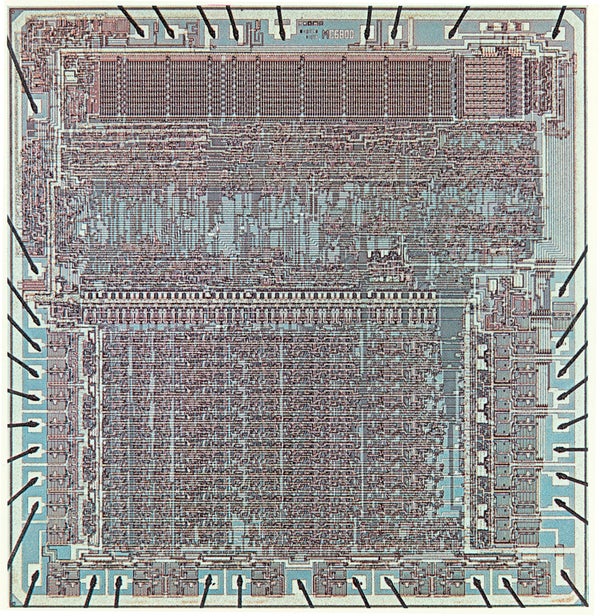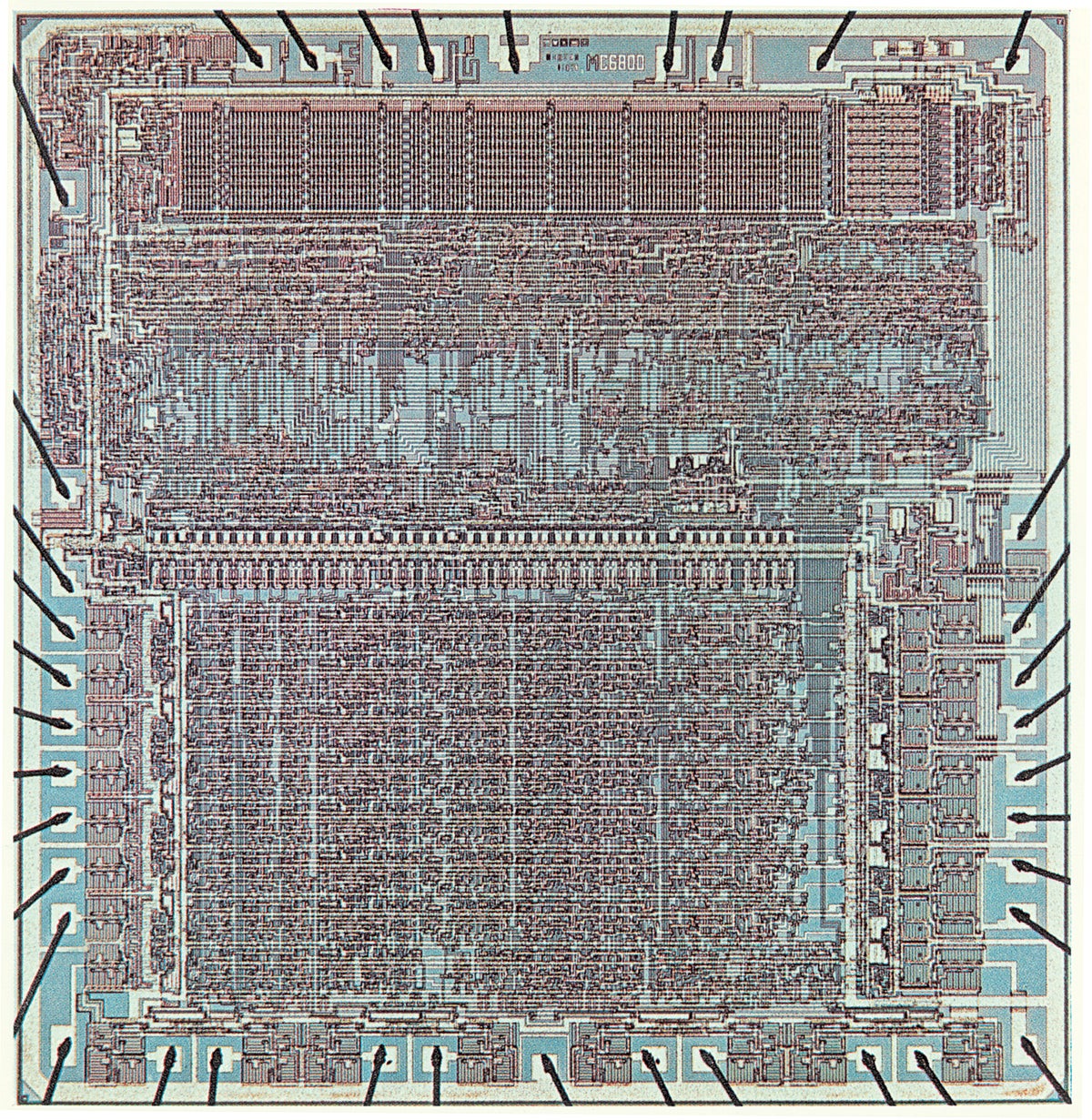May 2025: Science History from 50, 100 and 150 Years Ago
Old-time graffiti; balloon deaths

1975, Computer Chip: “Microprocessing unit if the Motorola microcomputer is an integrated circuit laid down on a single-crystal silicon chip 0.210 by 0.217 inch, enlarged in this image. The chip bears about 5,400 transistors. Black lines projecting outward are leads to pins of the finished package. In small lots the unit sells for $360.”
Scientific American, Vol. 232, No. 5; May 1975
1975
Introducing the Videodisc
“A ‘videodisc’ system that presents recorded pictures and sound on a television set will be put on the market next year by North American Philips Corporation and MCA Inc. The player looks somewhat like a phonograph, and the record resembles a phonograph record. The distinctive feature is an optical ‘stylus,’ which replaces the needle of the phonograph. The stylus is a scanner employing a one-milliwatt helium-neon laser as its sensor. The record is not touched by the playing device and therefore will not wear out or deteriorate. The optical stylus also makes it possible to pick out randomly part of a record for display, to run a scene in reverse or in slow motion, and to view a film frame by frame. The companies plan to sell the player for about $500 and the records for $2 to $10, depending on their length and content, which could include motion-picture films, instructional films, sports events and newsreels.”
On supporting science journalism
If you’re enjoying this article, consider supporting our award-winning journalism by subscribing. By purchasing a subscription you are helping to ensure the future of impactful stories about the discoveries and ideas shaping our world today.
A Giant Eye for Extraterrestrials
“Cyclops, an array of 1,500 radio antennas each 100 meters in diameter, has been proposed in a nasa-sponsored study as a tool for detecting signals from extraterrestrial civilizations. The antennas would be connected to one another and to a large computer system. The effective signal collecting area would be hundreds of times greater than that of any existing radio telescope and would be capable of detecting even such weak signals as the internal radio-frequency communications of a civilization as far away as several hundred light-years.”
The proposed Project Cyclops was shelved because of high anticipated costs.
1925
Colored Lights Reveal Speeding
“An idea has been suggested for a signal plate, firmly attached to a car, bearing three or four differently colored lights. These would be attached to the speedometer, so that the white light, for example, would burn when the speed was 10 to 15 miles an hour, the blue light between 15 and 30, the red at 40, and so on. If any officer or citizen saw a car running on a street and burning a red light, that would be sufficient evidence that the speed limit was being exceeded to a dangerous extent. Something has to be done to make our streets safer.”
Island Universes
“Thousands of universes, each similar to the galaxy of stars of which our sun is an insignificant member, with the nearest universe so distant that its light travels for a million years before it reaches us, have been shown to exist by Edwin P. Hubble, of the Mount Wilson Observatory. Through telescopes these universes appear to be clouds of light, more or less with a spiral structure. By means of variable stars in these galaxies, the distance of a few has been determined, and in the opinion of Harlow Shapley, director of the Harvard College Observatory, this proves the theory that they are ‘island universes’ lying entirely outside our own system.”
Old-Time Graffiti
“Human nature is a pretty constant thing. Archeologists digging in the ruins at Sakkara have found columns which were once part of an ancient Egyptian temple. Over 3,000 years ago it was already a show place, a sort of Washington Monument of the time. On the columns are scribbled names and comments, written there by visitors of 30 centuries ago, just as people write their names and addresses on the walls of public buildings today.”
1875
Balloon Deaths
“Croce-Spinelli and Sivel, two French aeronauts, have laid down their lives in the cause of science. With M. Gaston Tissandier, they attempted to ascend to a higher altitude than had ever before been reached, to make experiments for carbonic acid, conduct spectroscopic observations, and in general obtain data. It was believed possible by inhaling oxygen from a respirator. At 29,000 feet elevation all three men became unconscious. The balloon soared higher and higher and then descended. Tissandier regained his senses on reaching respirable air, to find his companions dead from suffocation.”


